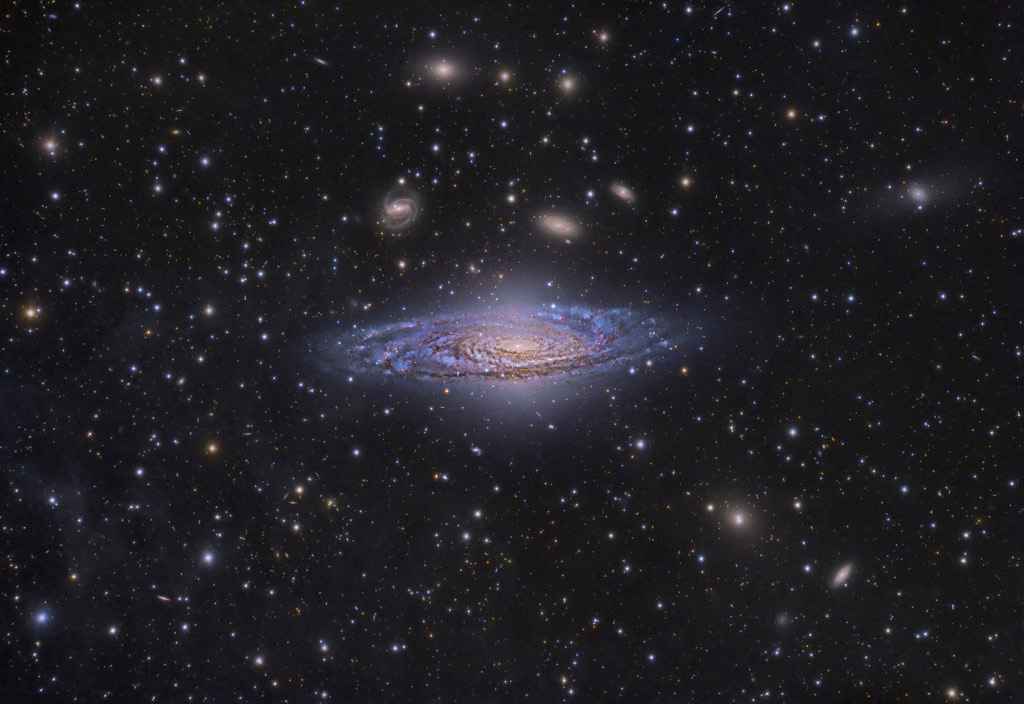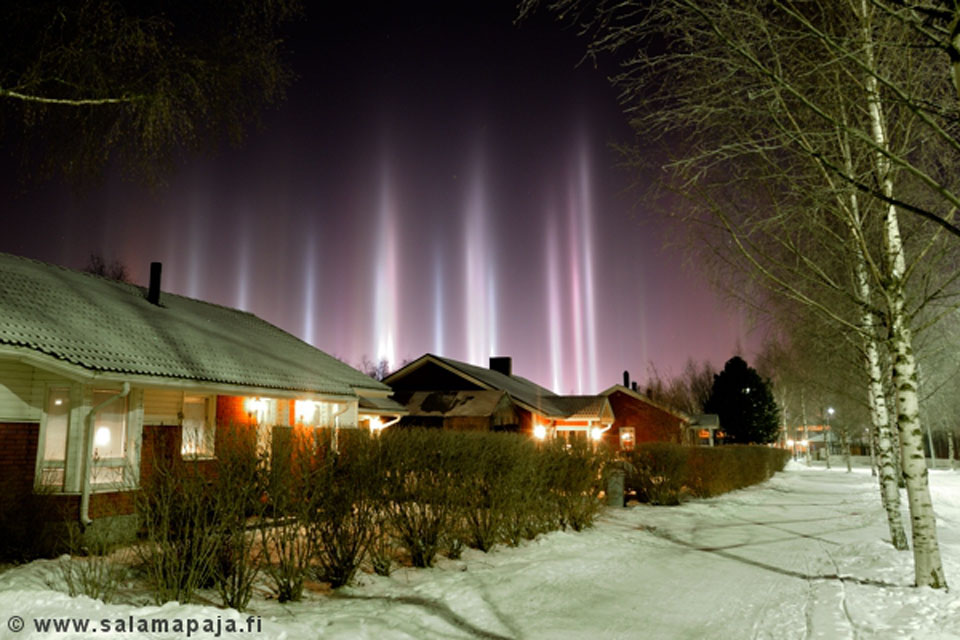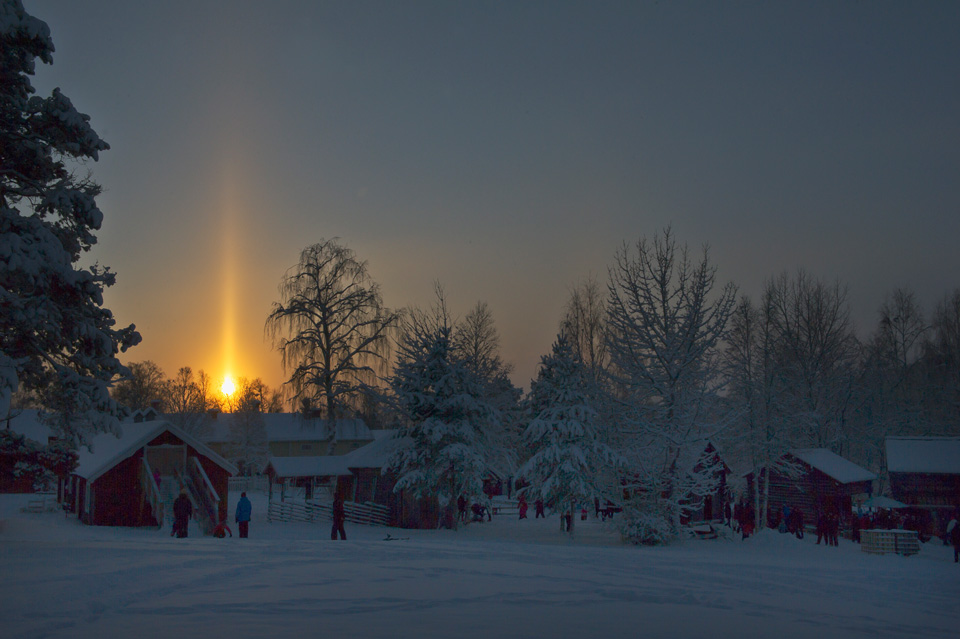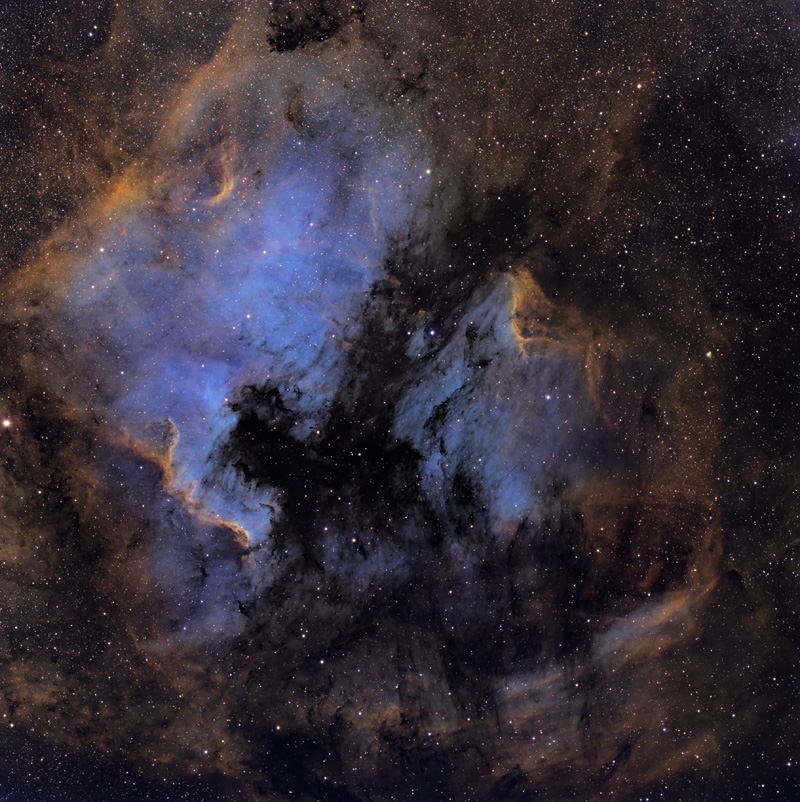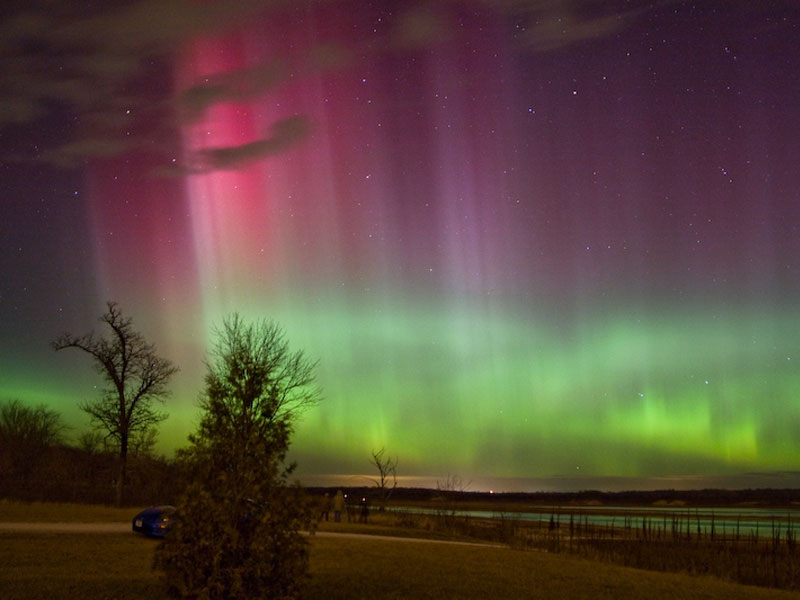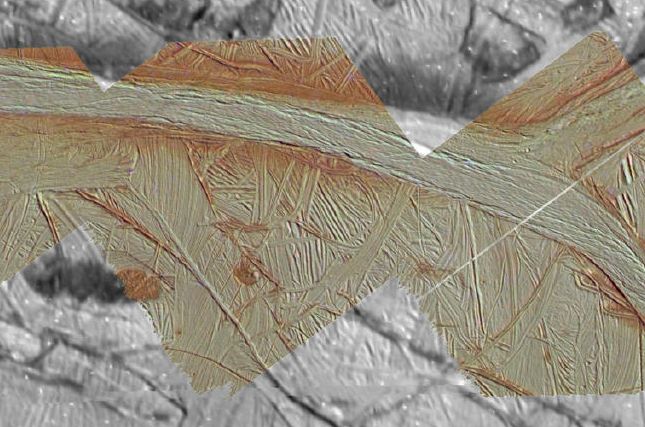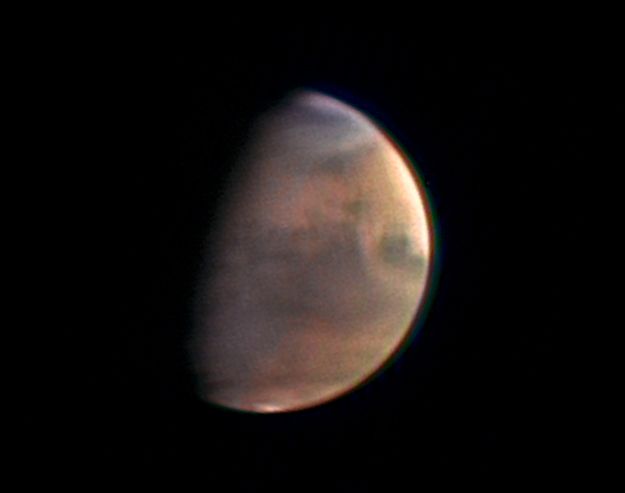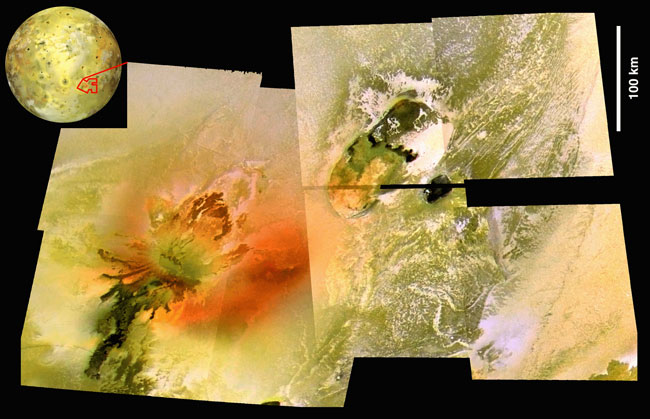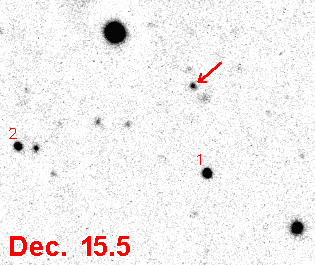| << Previous | Index | Next >> |
2014 Big, beautiful spiral galaxy NGC 7331 is often touted as an analog to our own Milky Way. About 50 million light-years distant in the northern constellation Pegasus, NGC 7331 was recognized early on as a spiral nebula and is actually one of the brighter galaxies not included in Charles Messier's famous 18th century catalog. Since the galaxy's disk is inclined to our line-of-sight, long telescopic exposures often result in an image that evokes a strong sense of depth. The effect is further enhanced in this sharp image from a small telescope by galaxies that lie beyond the gorgeous island universe. The most prominent background galaxies are about one tenth the apparent size of NGC 7331 and so lie roughly ten times farther away. Their close alignment on the sky with NGC 7331 occurs just by chance. Seen through faint foreground dust clouds lingering above the plane of Milky Way, this visual grouping of galaxies is known as the Deer Lick Group.
2013 What's happening behind those houses? Pictured above are not aurora but nearby light pillars, a local phenomenon that can appear as a distant one. In most places on Earth, a lucky viewer can see a Sun-pillar, a column of light appearing to extend up from the Sun caused by flat fluttering ice-crystals reflecting sunlight from the upper atmosphere. Usually these ice crystals evaporate before reaching the ground. During freezing temperatures, however, flat fluttering ice crystals may form near the ground in a form of light snow, sometimes known as a crystal fog. These ice crystals may then reflect ground lights in columns not unlike a Sun-pillar. While going out to buy cat food, a quick thinking photographer captured the above light pillars extending up from bright parking lot lights in Oulu, Finland.
2012 Have you ever seen a sun pillar? When the air is cold and the Sun is rising or setting, falling ice crystals can reflect sunlight and create an unusual column of light. Ice sometimes forms flat, six-sided shaped crystals as it falls from high-level clouds. Air resistance causes these crystals to lie nearly flat much of the time as they flutter to the ground. Sunlight reflects off crystals that are properly aligned, creating the sun-pillar effect. In the above picture taken last week, a sun-pillar reflects light from a Sun setting over Östersund, Sweden.
2011 Why do objects have mass? To help find out, Europe's CERN has built the Large Hadron Collider (LHC), the most powerful particle accelerator yet created by humans. Since 2008, the LHC has smashed protons into each other with unprecedented impact speeds. The LHC is exploring the leading explanation that mass arises from ordinary particles slogging through an otherwise invisible but pervasive field of virtual Higgs particles. Were high energy colliding particles to create real Higgs bosons, the Higgs mechanism for mass creation would be bolstered. Last week, two LHC groups reported on preliminary indications that the Higgs boson might exist around 120 GeV in mass. Data from the LHC collisions are also being scanned for micro black holes, magnetic monopoles, and exploring the possibility that every type of fundamental particle we know about has a nearly invisible supersymmetric counterpart. You can help -- the LHC@Home project will allow anyone with a home computer to help LHC scientists search archived LHC data for these strange beasts. Pictured above, a person stands in front of the huge ATLAS detector, one of six detectors attached to the LHC.
2010 Here lie familiar shapes in unfamiliar locations. On the left is an emission nebula cataloged as NGC 7000, famous partly because it resembles our fair planet's continent of North America. The emission region to the right of the North America Nebula is IC 5070, also known for its suggestive outlines as the Pelican Nebula. Separated by a dark cloud of obscuring dust, the two bright nebulae are about 1,500 light-years away. At that distance, the 4 degree wide field of view spans 100 light-years. This spectacular cosmic portrait combines narrow band images of the region in a false-color palette to highlight bright ionization fronts with fine details of dark, dusty forms in silhouette. Emission from atomic hydrogen, sulfur, and oxygen is captured in the narrow band data. These nebulae can be seen with binoculars from a dark location. Look northeast of bright star Deneb in the constellation Cygnus the Swan.
2009 At least 34 meteors are included in this composite image as they rain through Australian skies during the annual Geminid Meteor shower. Dust particles strung out along the orbit of extinct comet Phaethon vaporize when they plow through planet Earth's atmosphere causing the impressive display. Although the particles are traveling parallel to each other, the resulting streaks clearly seem to radiate from a single point on the sky near Gemini's twin stars Castor and Pollux at the lower right. The radiant effect is due to perspective, as the parallel tracks appear to converge at a distance. Taken over a period of 2 hours on the morning of December 14, short exposures recording individual meteor streaks were combined with a single long exposure to show the background stars, with Sirius at the top, and the constellation Orion at left. Faint stars and nebulae of the Milky Way track through the center of the frame. Near the radiant point, an extra star in Gemini is actually the flash of a meteor seen almost head-on.
2008 Y Canum Venaticorum (Y CVn) is a very rare star in planet Earth's night sky. It's also very red, exhibiting such a remarkable spectrum of light, 19th century astronomer Angelo Secchi dubbed it La Superba. Located 710 light-years away in northern constellation Canes Venatici (the Hunting Dogs), the star varies in brightness over a period of about half a year. Near maximum, it becomes just bright enough to see with the unaided eye, but the star's beautiful red hue is easy to see in binoculars or a small telescope. In fact, La Superba is among the brightest of the carbon stars - cool, highly evolved red giant stars with exceptional abundances of carbon. The carbon is created by helium fusion near the stellar core and dredged up into the stars' outer layers. The resulting overabundance of simple carbon molecules (like CO, CN, C2) in the atmospheres of carbon stars strongly absorbs bands of bluer light and gives these stars a deep red color. La Superba is losing its carbon-rich atmosphere into the surrounding interstellar material through a strong stellar wind, and could be near the beginning of a transition to a planetary nebula phase.
2007 You're rolling across Mars when you unexpectedly uncover some unusually light soil. You stop. You turn. You return to inspect the soil and find out it is almost purely silica -- the main ingredient in quartz and glass. Such soil has never been found on Mars before. What created this soil? Since you are the robotic rover Spirit currently rolling across Mars, you send the images and data back to Earth for analysis. Your scientist friends from the blue water planet say that such soil on Earth is usually created by either volcanic steam or a hot spring. The second hypothesis in particular indicates, once again, a wet past for part of Mars, as possibly hot water saturated with silica deposited the white soil. Intriguingly, on Earth, living microbes typically flourish under either condition. Pictured above, the uncovered light soil is visible on the right.
2006 Last Thursday evening, stars were not the only lights in Iowa skies. Spectacular northern lights also shone from the heavens, extending across the midwestern USA and other locations not often graced with auroral displays. The wide-ranging auroral activity was triggered as a large solar flare - an energetic cloud of particles blasted outward from the Sun a few days earlier - collided with planet Earth's magnetosphere. Alerted to conditions ripe for aurora, photographer Stan Richard recorded this apparition over Saylorville Lake, near Des Moines, Iowa, USA. While the colorful rays seem to end just above the water, they are actually at altitudes of 100 kilometers or more.
2005 M83 is one of the closest and brightest spiral galaxies on the sky. Visible with binoculars in the constellation of Hydra, majestic spiral arms have prompted its nickname as the Southern Pinwheel. Although discovered 250 years ago, only much later was it appreciated that M83 was not a nearby gas cloud, but a barred spiral galaxy much like our own Milky Way Galaxy. M83, pictured above in a photograph from a Very Large Telescope, is a prominent member of a group of galaxies that includes Centaurus A and NGC 5253, all of which lie about 15 million light years distant. Several bright supernova explosions have been recorded in M83. An intriguing double circumnuclear ring has been discovered at the center of M83.
2004 This bright white swath cutting across the surface of icy Jovian moon Europa is known as Agenor Linea. In all about 1000 kilometers long and 5 kilometers wide, only a section is pictured here as part of a combined color and black and white image based on data from the Galileo spacecraft. Most linear features on Europa are dark in color but Agenor Linea is uniquely bright for unknown reasons. Also unknown is the origin of the reddish material along the sides. While these and other details of Europa's surface formations remain mysterious, the general results of Galileo's exploration of Europa have supported the idea that an ocean of liquid water lies beneath the cracked and frozen crust. An extraterrestrial liquid ocean holds out the tantalizing possibility of life.
2003 Hurtling toward its destination, the high resolution camera on board ESA's Mars Express spacecraft recorded this tantalizing view of the Red Planet earlier this month on December 3rd. Seen from a distance of 5.5 million kilometers, features across part of Mars' western hemisphere are bathed in sunlight. The Martian night side is also prominent from the spacecraft's perspective, a view not possible for Earthbound telescopes. Launched on an interplanetary voyage of exploration in early June, Mars Express carries with it the Beagle 2 lander, scheduled to be released from Mars Express tomorrow, December 19th. Mars Express and Beagle 2 will then continue the journey separately, but both are scheduled to reach Mars on December 25th, with Mars Express entering an elliptical orbit and Beagle 2 descending to the Martian surface. Two more invaders from Earth, NASA's Mars Exploration Rovers, will arrive in January.
2002 What causes the unusual colors surrounding Io's volcanoes? Io, the innermost large moon of Jupiter, is known to be the most tumultuous body in the Solar System. Approximately the size of Earth's Moon, Io undergoes nearly continuous volcanic eruptions from an interior heated by gravitational tides from Jupiter and Jupiter's other large moons. The robot spacecraft Galileo currently orbiting Jupiter has been monitoring the active volcano Culann Patera over the past few years. The above images indicate that the volcano has produced not only red and black colored lava flows, but yellow sulfur patches from explosive plumes. Green colors may arise when these processes affect the same terrain. White patches may be caused, in part, by sulfur dioxide snow. As Galileo has fulfilled its mission objectives and is running low on maneuvering fuel, NASA plans to crash the spacecraft into Jupiter during 2003.
2001 Where do the most massive stars form? Observational evidence indicates that the outskirts of developing open clusters of stars are primary locations. Pictured above is one such open cluster: Sharpless 212. Visible in the image center are massive stars in the open cluster. The energetic light from these stars ionizes surrounding hydrogen atoms creating an HII region. As the hydrogen atoms re-acquire electrons, they emit the red light highlighted. Sharpless 212 also contains small amounts of dust and heavy atoms such as Sulfur. The dust efficiently absorbs light, while emission from Sulfur is highlighted in blue. Particularly striking and well-defined boundaries that separate the ionized material from surrounding neutral material are visible at the edge of the HII region. Sharpless 212 spans about 20 light years and lies about 25,000 light years away.
2000 The search for extraterrestrial life came back into our own Solar System last week with the announcement that there may be liquid oceans under the surface of Jupiter's moon Ganymede. Ganymede now joins Callisto and Europa as moons of Jupiter that may harbor seas of liquid water under layers of surface ice. The ocean hypothesis surfaced as an explanation for Ganymede's unusually strong magnetic field. Ganymede, the largest moon in the Solar System, also has the largest measured magnetic field of any moon. Some exobiologists hypothesize that life may be able to emerge in such an ocean, much as it did in the oceans of ancient Earth. Above, a frame from a computer simulation shows what it would look like to fly over the surface of Ganymede, as extrapolated from photographs of the grooved moon taken by the robot spacecraft Galileo currently orbiting Jupiter.
1999 Grand spiral galaxies often seem to get all the glory. Their newly formed, bright, blue star clusters found along beautiful, symmetric spiral arms are guaranteed to attract attention. But small irregular galaxies form stars too, like this lovely, gumdrop-shaped galaxy, Sextans A. A member of the local group of galaxies which includes the massive spirals Andromeda and our own Milky Way, Sextans A is about 10 million light years distant. The bright Milky Way foreground stars appear yellowish in this view. Beyond them lie the stars of Sextans A with tantalizing young blue clusters clearly visible.
1998 TT Cygni is a cool red giant star with a wind. This false-color picture of TT Cyg was made using a coordinated array of millimeter wavelength radio telescopes and shows radio emission from carbon monoxide (CO) molecules in the surrounding gas. The central emission is from material blown off the red giant over a few hundred years while the thin ring, with a radius of about 1/4 light-year, actually represents a shell of gas expanding outward for 6,000 years. Carbon stars like TT Cyg are so named for their apparent abundance of carbon containing molecules. The carbon is likely the dredged-up ashes of nuclear helium burning in the stellar interior. Carbon stars loose a significant fraction of their total mass in the form of a stellar wind which ultimately enriches the interstellar gas - the source of material for future generations of stars. TT Cyg is about 1,500 light-years away in the constellation Cygnus.
1997 Gamma-ray bursts seem to be the most powerful explosions in the Universe. Yet their sources continue to elude researchers who stand in awe and frustration at the bursts' transient, enigmatic behavior. The blinking gif above illustrates the latest hard-won result in the quest to identify and understand the nature of the bursters. These Apache Point Observatory optical images from Monday and Tuesday this week have helped identify a faint, fading object (red arrow) near the position of a gamma-ray burst. The gamma-ray burst triggered satellite observatories on Sunday, December 14th. Faint stars near the constellation Ursa Major (the Big Dipper) also appear in these "negative" images of the sky. Though thousands of bursts have been detected by satellites sensitive to gamma rays, it is likely that this object represents only the third known optical counterpart to a gamma-ray burst.
1996 Interstellar space is filled with extremely tenuous clouds of gas which are mostly Hydrogen. The neutral hydrogen atom (HI in astronomer's shorthand) consists of 1 proton and 1 electron. The proton and electron spin like tops but can have only two orientations; spin axes parallel or anti-parallel. It is a rare event for Hydrogen atoms in the interstellar medium to switch from the parallel to the anti-parallel configuration, but when they do they emit radio waves with a wavelength of 21 centimeters (about 8 inches) and a corresponding frequency of exactly 1420 MHz. Tuned to this frequency radio telescopes have mapped the neutral Hydrogen in the sky. The above image represents such an all-sky HI survey with the plane of our Milky Way Galaxy running horizontally through the center. In this false color image no stars are visible, just diffuse clouds of gas tens to hundreds of light years across which cluster near the plane. The gas clouds seem to form arching, looping structures, stirred up by stellar activity in the galactic disk.
1995 The Whirlpool Galaxy is frequently given as an example of a galaxy with classic spiral design. At only 15 million light years distant, M51, also cataloged as NGC 5194, is also one of the brighter and more picturesque galaxies on the sky. The smaller galaxy appearing here above and to the right is also well behind M51, as can be inferred by the dust in M51's spiral arm blocking light from this smaller galaxy. Astronomers speculate that M51's spiral structure is primarily due to it's gravitational interaction with this smaller galaxy.
| << Previous | Index | Next >> |
